Steroids
Costly Cycling Mistakes You Ought to Stop Immediately

Professional bodybuilders are highly dedicated and experienced individuals. However, they can still make mistakes in their training and cycling (periodic use of performance-enhancing drugs) that may hinder their progress or risk their health. Here are some common cycling mistakes that pro bodybuilders may make:
Overreliance on Steroids
Pro bodybuilders sometimes rely too heavily on steroids to achieve their physique goals. This can lead to health issues and the risk of dependence on these substances.
Excessive Dosages
Using higher doses of steroids than necessary can increase the risk of side effects and health problems. Some may think that more is always better, but this is not the case with steroids.
Must Read: First Injectable Steroid Cycle
Inadequate Post-Cycle Therapy (PCT)
Neglecting to implement a proper post-cycle therapy can lead to hormonal imbalances, muscle loss, and other complications after coming off a steroid cycle.
Too Frequent Cycling
Some pro bodybuilders may cycle steroids too frequently, preventing their natural hormone production from fully recovering. This can lead to long-term health issues.
Neglecting Health Monitoring
Professional bodybuilders should regularly monitor their health through blood tests, physical exams, and other assessments. Ignoring these check-ups can lead to undetected health problems.
Inadequate Rest and Recovery
Pro bodybuilders often push their bodies to the limit, which can lead to overtraining and injuries. Proper rest and recovery are essential for long-term success.
Poor Nutrition
Neglecting a balanced and well-structured diet can hinder progress and overall health. Nutrition is a critical component of bodybuilding success.
Ignoring Mental Health
The pressure and demands of professional bodybuilding can affect mental health. Ignoring mental well-being can lead to burnout and other issues.
Neglecting Mobility and Flexibility
Focusing solely on muscle size and strength can lead to limited mobility and flexibility. Maintaining a full range of motion is essential for overall health and performance.
Not Adapting to Changing Needs
As the body changes over time, pro bodybuilders may need to adjust their training, nutrition, and cycling protocols. Failing to adapt can lead to stagnation.
Prioritizing Aesthetics Over Health
Pro bodybuilders may prioritize their competition aesthetics over their long-term health, which can lead to health problems down the line.
Lack of Off-Season
Some pro bodybuilders fail to give their bodies a sufficient off-season period, essential for recovery and addressing health concerns.
Risky Substances
In the quest for an edge, some professional bodybuilders may experiment with unproven or potentially dangerous substances, risking their health.
Why Cycling Too Often Is A Bad Idea
While cycling can be a valuable strategy for making progress and avoiding plateaus, cycling too often or without proper planning can have several potential dangers and drawbacks in bodybuilding:
Overtraining
Constantly changing workout routines or training intensities without adequate recovery can lead to overtraining, resulting in decreased performance, fatigue, and an increased risk of injuries.
Inconsistent Progress
Frequent cycling can make tracking progress difficult, which can be demotivating. Consistency is often key to making substantial gains in muscle mass and strength.
Lack of Mastery
Frequent changes in training routines may prevent you from mastering specific exercises or techniques essential for muscle hypertrophy and strength development.
Nutritional Imbalance
Cycling macronutrient ratios or specific diets too often can lead to nutritional imbalances and may not give your body the consistency it needs to adapt and grow.
Supplement Ineffectiveness
Over-cycling supplements can make your body desensitized to their effects. Some supplements work best when cycled, but doing so too often may hinder their efficacy.
Mental Fatigue
Constantly switching between training styles or diets can lead to mental burnout, requiring frequent adaptation and decision-making.
Time-Consuming
Designing and implementing new routines, diets, or supplement regimens can be time-consuming. This time might be better spent focusing on consistent, long-term strategies.
Risk of Injury
Frequent changes in exercises or training modalities can increase the risk of injury, as your body may not adapt fully to the movements before changing them again.
Difficulty in Identifying What Works
If you change elements too frequently, it can be challenging to determine what training, nutrition, or supplement strategies are genuinely effective for your body.
Potential for Frustration
Constant changes can lead to frustration and impatience as you may not see the immediate desired results. Building muscle and strength often requires patience and consistency.
- Unrealistic Expectations: Frequent cycling can foster unrealistic expectations for fast and constant progress. Muscle growth and strength gains often occur in phases and require consistent effort.
- Financial Costs: Constantly changing supplements or diets can be financially burdensome. Supplements, in particular, can be expensive when used excessively.
In bodybuilding, the key is to balance incorporating variety and ensuring consistency. Properly planned cycles with adequate rest and recovery periods can be beneficial. Still, overdoing it by cycling too often can hinder your long-term progress and increase the risk of injury or burnout. It's essential to have a well-structured training and nutrition plan that aligns with your goals and allows you to make steady, sustainable progress over time.
Overcoming Mental Fatigue Caused By Unregulated Cycling
Overcoming mental fatigue due to excessive cycling in bodybuilding is essential for maintaining motivation, consistency, and long-term progress. Here are some strategies to help you combat mental fatigue and stay on track:
Set Clear Goals
Clear, well-defined goals can give you a sense of purpose and direction. When you know what you're working toward, it can be easier to stay motivated and focused.
Create a Structured Plan
Develop a well-structured training and nutrition plan that aligns with your long-term goals. A clear plan can reduce the need for constant changes and experimentation.
Periodization
Use periodization techniques to plan your training cycles. Periods of intensity and rest can help you maintain progress without constant changes.
Progress Tracking
Keep a detailed log of your workouts, diet, and supplement intake. This allows you to see your progress and identify what works best for you, reducing the need for constant changes.
Manage Expectations
Understand that muscle growth and strength gains take time. Set realistic expectations and accept that progress may come in phases rather than steadily.
Focus on Fundamentals
Instead of constantly seeking novelty in your workouts or diets, focus on mastering the fundamentals. Improving your form, technique, and consistency can lead to better results.
Consult a Coach or Trainer
If you're overwhelmed by the complexity of your program, consider working with a knowledgeable coach or trainer who can provide guidance and structure.
Seek Social Support
Connect with fellow bodybuilders in person or through online communities to share experiences, advice, and motivation. Supportive peers can help combat mental fatigue.
Implement Rest and Recovery
Ensure you build rest days into your training plan and deload weeks or months. This helps prevent physical and mental burnout.
Relaxation Techniques
Incorporate relaxation techniques like meditation, deep breathing, or yoga into your routine to manage stress and mental fatigue.
Variety Within Consistency
While excessive cycling can lead to mental fatigue, some variety in your workouts can be refreshing. You can change exercise variations or rep schemes periodically without a complete overhaul.
Psychological Breaks
Take occasional breaks from intense bodybuilding routines to give your mind a rest. Engage in hobbies or activities unrelated to your training to recharge mentally.
Education
Continuously educate yourself about effective training and nutrition strategies. The more you know, the more you can make informed decisions about your regimen.
Reevaluate Your Priorities
Sometimes, taking a step back is essential to assess whether your bodybuilding goals align with your current lifestyle and priorities.
Professional Help
If mental fatigue becomes overwhelming or is accompanied by symptoms of anxiety or depression, consider seeking the support of a mental health professional.
Remember that bodybuilding is a long-term endeavor, and consistency and patience are key to success. Reducing the frequency of cycling and finding a balanced, sustainable approach can help you overcome mental fatigue and continue progressing in your bodybuilding journey.
Related Article: Olympic Lifting: 25 Strategies That Work
Handling Poor Steroid Cycling Like A Pro
Steroid cycling has immense benefits and health risks in equal measure. It all depends on a person's approach. Here is how you can ensure steroid cycling doesn't backfire on you.
Consultation with a Healthcare Professional
The process begins with a consultation with a qualified healthcare provider. This could be an endocrinologist, sports medicine specialist, or healthcare professional. You must have a legitimate medical reason for using steroids, such as hormone deficiencies or certain medical conditions.
Medical Evaluation
Your healthcare provider will conduct a thorough medical evaluation, including blood tests, to determine your needs and the appropriate dosage.
Prescription
If it's determined that you need anabolic steroids, your healthcare provider will prescribe the specific type and dosage based on your medical condition and requirements.
Monitoring
Regular monitoring, including blood tests, is crucial to assess the effects of the steroids on your body and adjust the treatment plan as needed.
Cycling and Dosage
Under medical supervision, a specific cycling plan will be established, including the duration of steroid use and the dosage. It's essential to follow the prescribed protocol strictly.
Post-Cycle Therapy (PCT)
A post-cycle therapy plan may help your body recover its natural hormone production after completing a steroid cycle. This step is critical in minimizing potential side effects.
Adverse Effects Management
If you experience any adverse effects during the treatment, you should promptly communicate with your healthcare provider, who can adjust your treatment plan accordingly.
Supplementation Blunders
Supplementation, when used responsibly and under the guidance of a healthcare professional for legitimate medical purposes, can be beneficial when using steroids. However, there are some poor supplementation habits that individuals should avoid when using steroids, especially for non-medical or performance-enhancement purposes. These habits can lead to health risks and other complications:
Over-Reliance on Steroids
One of the common mistakes is relying excessively on steroids to achieve muscle gains, neglecting other essential aspects of training and nutrition. Steroids should complement, not replace, proper diet and exercise.
Excessive Dosages
Taking higher doses of steroids than recommended or necessary can increase the risk of side effects and health issues. Following the prescribed dosage is crucial for safety.
Neglecting Other Supplements
Some individuals may focus solely on anabolic steroids and neglect supplements that can support overall health and well-being, such as vitamins, minerals, and essential nutrients.
Ignoring Post-Cycle Therapy (PCT)
Neglecting to undergo proper post-cycle therapy after using steroids can lead to hormonal imbalances, muscle loss, and other complications. PCT is essential to help your body recover its natural hormone production.
Inadequate Monitoring
Failing to regularly monitor your health through blood tests, physical exams, and other assessments can lead to undetected health problems or side effects.
Combining Multiple Compounds
Some individuals make the mistake of combining multiple types of steroids and other performance-enhancing substances, which can increase steroid use's complexity and potential risks.
Neglecting Health Warnings
Many steroids carry health warnings and potential side effects. Ignoring these warnings and not seeking medical advice if you experience adverse effects can be dangerous.
Poor Nutrition
Relying on supplements while neglecting a balanced and well-structured diet can hinder progress and overall health. Nutrition is a critical component of bodybuilding success.
Misuse of Over-the-counter Supplements
Combining anabolic steroids with over-the-counter supplements can be risky, especially with stimulants or other compounds that may interact negatively.
Relying on Supplements for Quick Fixes
Some people may expect supplements to provide rapid results without putting in the effort required through proper diet and training. This is an unrealistic expectation and can lead to disappointment.
Neglecting Overall Health
Focusing solely on muscle gain and performance can lead to neglect of overall health, including cardiovascular and organ health. Regular check-ups are important.
Lack of Education
Before using supplements, educate yourself about their effects, potential risks, and legal implications. Being well-informed can help you make safer decisions.
It's important to remember that using anabolic steroids should only occur under the guidance and supervision of a qualified healthcare professional for legitimate medical purposes. Misusing steroids or supplements can have serious health consequences and legal ramifications. Always prioritize your health and well-being and consider alternatives to achieve your fitness and bodybuilding goals that don't involve using performance-enhancing substances.
Overall Benefits Of Cycling
Cycling is important for several reasons:
Preventing Plateaus
The human body is highly adaptable. Over time, it can become accustomed to a specific training routine or diet, leading to plateaus in muscle growth and strength gains. Cycling helps break through these plateaus by introducing new stimuli.
Muscle Confusion
Changing exercises, rep ranges and training techniques keeps your muscles guessing, leading to more well-rounded development. This approach is often referred to as "muscle confusion."
Preventing Overtraining
Cycling can prevent overtraining, where the body is pushed beyond its capacity to recover. Your body can recover fully by periodically reducing training intensity or taking de-load weeks.
Mental Refreshment
Cycling can provide a mental break from the monotony of a consistent routine. It can help keep you motivated and engaged in your training.
Injury Prevention
Repeating the same exercises and movements continuously can increase the risk of overuse injuries. Cycling allows for variety and reduces the risk of such injuries.
Adaptation to Individual Needs
Your body's needs change over time. Cycling allows you to adapt to these changing needs, such as periods of higher or lower training intensity based on your goals, energy levels, and recovery.
Optimizing Hormonal Balance
Cycling can help maintain a healthier hormonal balance by preventing the overuse of high-intensity training or extreme dieting, which can negatively affect hormone levels.
Long-Term Sustainability
Cycling is an integral part of a sustainable and balanced approach to bodybuilding. It helps you avoid burnout and injury, enabling you to train and build muscle over the long term.
Customization
It allows you to customize your training and nutrition plan to specific goals. For instance, you might focus on strength and shift to hypertrophy or endurance.
Recovery
Deload periods or less intense training phases during cycles give your body time to recover, reducing the risk of injury and chronic fatigue.
Evaluating Progress
Cycling can help you assess the effectiveness of different training techniques or dietary strategies over time, making it easier to identify what works best.
Avoiding Burnout
Cycling in bodybuilding can help prevent mental and physical burnout, keeping your passion for training alive.
Overall
It's important to note that while cycling is valuable, it must be done thoughtfully and within a structured plan. Frequent and haphazard changes can lead to inefficiency and confusion. Proper periodization, under the guidance of a knowledgeable coach or trainer, can help you design effective cycling routines tailored to your goals and needs.
Professional bodybuilding is highly specialized and demanding, and using performance-enhancing drugs is contentious. While some individuals compete in this manner, it's essential to prioritize health and safety throughout one's bodybuilding journey. Professional bodybuilders should work closely with knowledgeable medical professionals to minimize risks and maintain their health and well-being.
Read More: Top 10 Best Immune Boosting Supplements to Buy in 2023
Steroids
Decoding IGF-1 LR3: A Guide to its Benefits
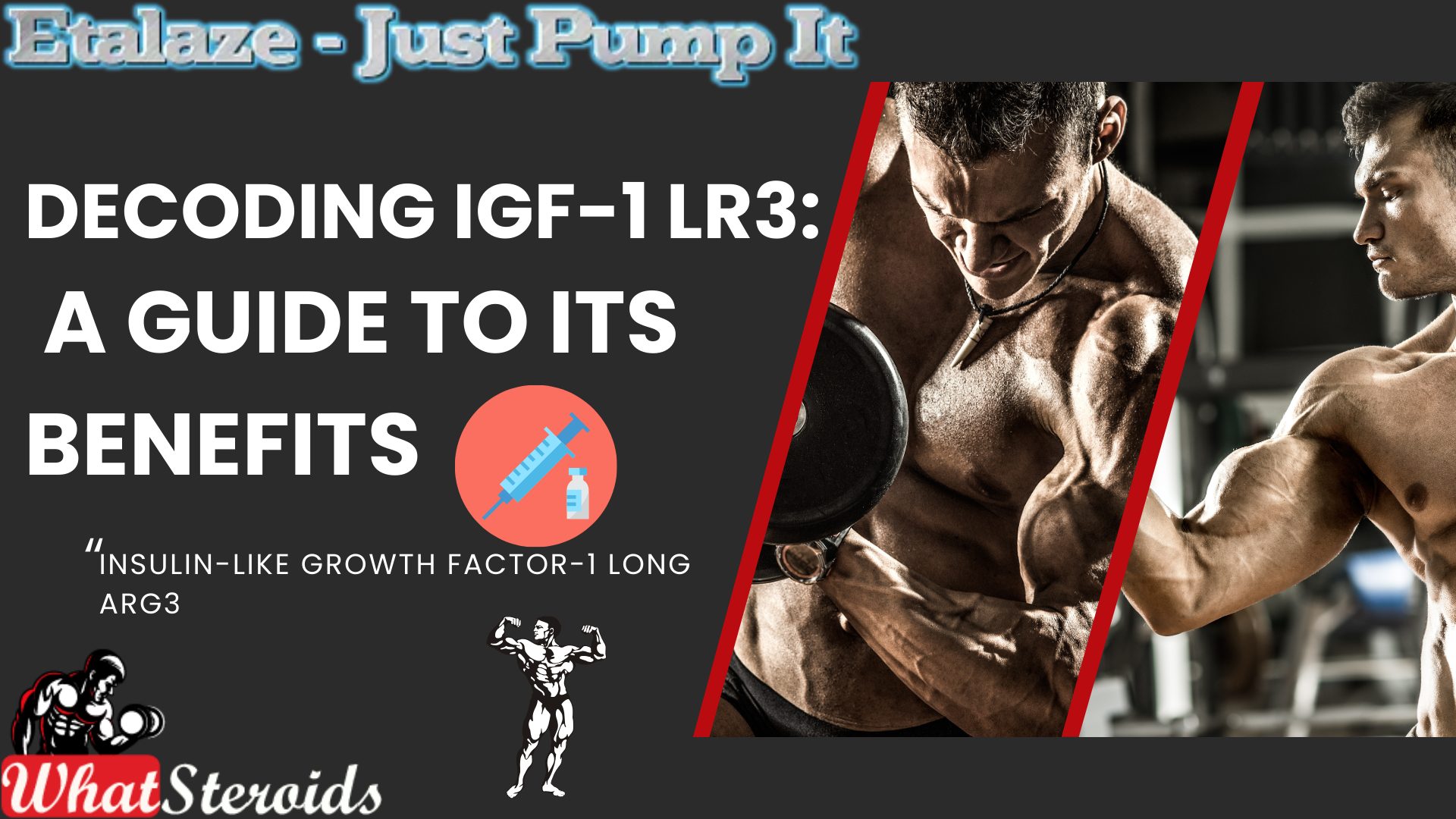
IGF-1 LR3 (Insulin-like Growth Factor-1 Long Arg3) is a synthetic variant of IGF-1, a hormone produced by the liver in response to growth hormone (GH). Unlike GH, which works indirectly, IGF-1 directly facilitates the growth and repair of muscle cells.
Related Article: Ostarine for Beginners; The Ultimate Guide
This modified version of IGF-1 is engineered to avoid binding with IGF-binding proteins, extending its half-life to 20–30 hours. As a result, it remains active in the body significantly longer than natural IGF-1.
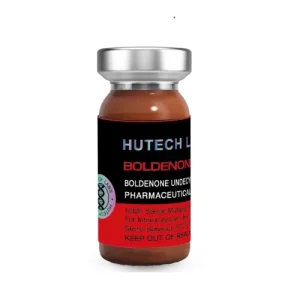 Click here to BuyBoldenone 300 by Hutech
Click here to BuyBoldenone 300 by Hutech
Many performance athletes incorporate IGF-1 LR3 post-workout to enhance muscle growth, speed up recovery, and support fat loss. When injected into specific muscle groups, it often produces localized effects. Additionally, it helps with nutrient distribution and, in some cases, improves insulin sensitivity.
On the other hand, human growth hormone (HGH) operates more broadly and indirectly, stimulating the liver to produce IGF-1 and offering more systemic benefits such as improved skin health, joint support, and fat reduction, albeit at a slower pace.
Typical IGF-1 LR3 doses range from 20–50 mcg daily, administered subcutaneously or intramuscularly, often following a workout.
Key Features of IGF-1 LR3
Enhanced Bioavailability: It avoids binding with IGF-binding proteins, increasing its potency.
Muscle Growth & Repair: Directly stimulates muscle cell proliferation and differentiation.
Improved Nutrient Distribution: Helps shuttle nutrients into muscle cells, supporting recovery.
Potential Fat Loss Benefits: Some users report improved insulin sensitivity and fat metabolism.
Mechanism of Action
IGF-1 LR3 interacts with IGF-1 receptors on muscle cells, activating pathways like PI3K-AKT and MAPK, which are crucial for cell growth and regeneration. This makes it a powerful tool for bodybuilders and athletes looking to optimize recovery and muscle development.
What Are the Top 10 Alternatives to IGF-1 LR3?
Here are some of the top alternatives to IGF-1 LR3, each with unique benefits for muscle growth, recovery, and performance:
BPC-157 – Known for its regenerative properties, it enhances healing and tissue repair.
CJC-1295 – A growth hormone-releasing peptide that boosts GH levels for muscle development.
Ipamorelin – Stimulates GH release with minimal side effects, making it a safer option.
MK-677 (Ibutamoren) – A potent GH secretagogue that promotes muscle growth and fat loss.
Sermorelin – Encourages natural GH production, supporting recovery and lean muscle gains.
Tesamorelin – Primarily used for fat loss, but also aids in muscle preservation.
Follistatin-344 – Inhibits myostatin, allowing for increased muscle hypertrophy.
PEG-MGF (Pegylated Mechano Growth Factor) – Enhances muscle repair and growth post-exercise.
GHRP-6 – Stimulates appetite and GH release, supporting muscle mass gains.
GHRP-2 – Similar to GHRP-6 but with fewer hunger-related side effects.
Each of these peptides has distinct mechanisms and benefits.
Must Read: Are Nootropics a Better Option to AAS?
Potential Risks Associated With IGF-1 LR3
IGF-1 LR3 comes with several potential risks, especially for bodybuilders using it to enhance muscle growth. Here are some key concerns:
Hypoglycemia (Low Blood Sugar) – IGF-1 LR3 increases glucose uptake in muscle cells, which can lead to dangerously low blood sugar levels if not managed properly.
Organ Growth – Since IGF-1 affects all tissues, excessive use may lead to unwanted growth in organs, increasing health risks.
Cancer Risk – IGF-1 plays a role in cell proliferation, and elevated levels have been linked to an increased risk of certain cancers.
Water Retention & Edema – Some users experience bloating and fluid retention, which can affect performance and aesthetics.
Joint Pain & Stiffness – Excessive IGF-1 levels may contribute to joint discomfort due to increased tissue growth.
Cardiovascular Issues – There is some concern that IGF-1 LR3 could contribute to heart enlargement or other cardiovascular complications.
Desensitization – Long-term use may reduce the body's natural IGF-1 production, leading to dependency
Overall
IGF-1 LR3's ability to bypass IGF-binding proteins makes it more potent but also increases the likelihood of desensitization with prolonged use. For those considering it, careful dosing and monitoring are crucial to mitigate side effects.
Steroids
AOD-9604: The Fat-Burning Peptide Explained
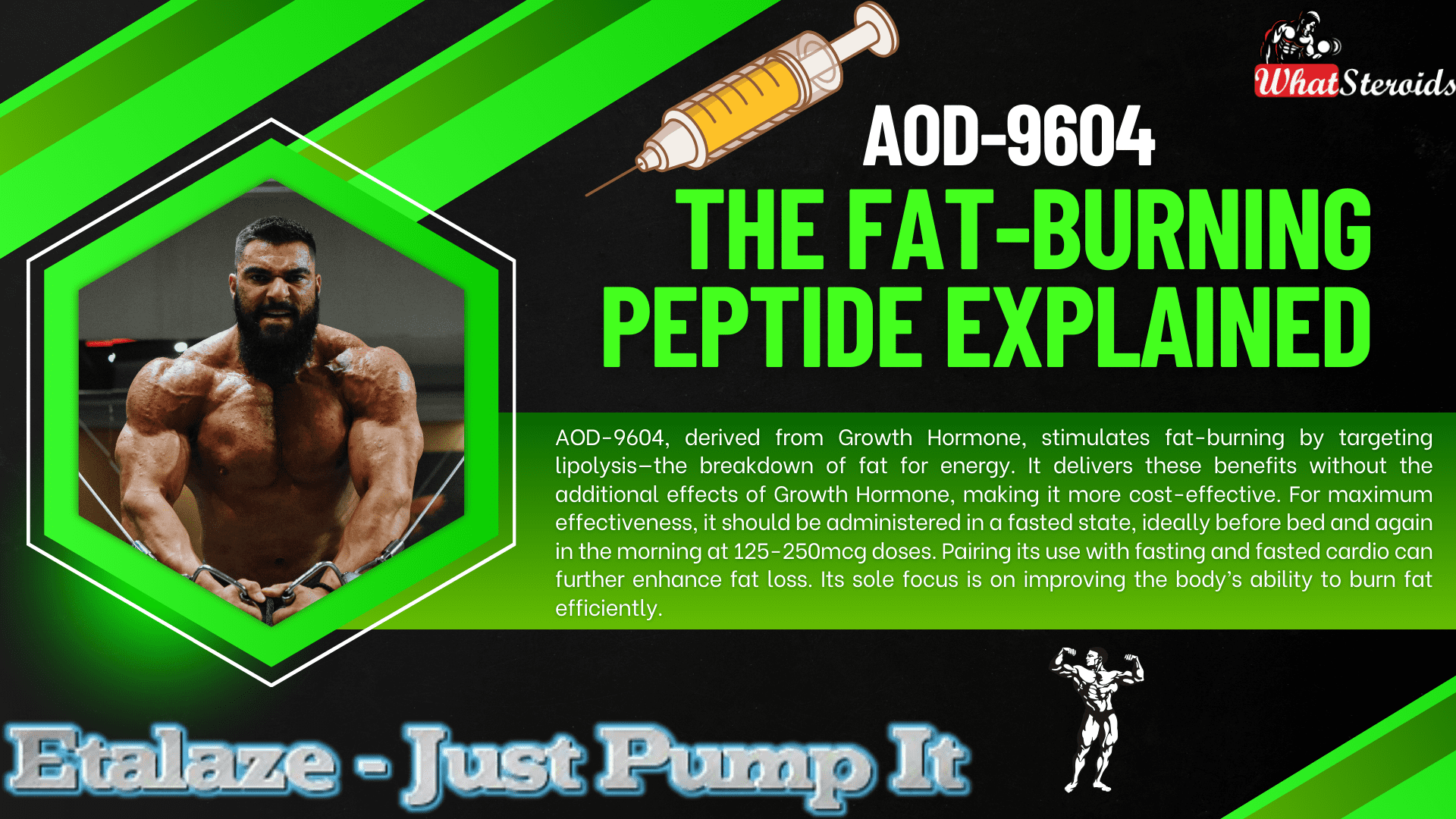
AOD-9604, along with the similar HGH Frag 176-191, is a peptide derived from Growth Hormone that includes only the amino acids in HGH responsible for stimulating fat breakdown, known as lipolysis.
This means that these peptides offer the fat-burning benefits of HGH without its other effects—whether beneficial or adverse—and come at a lower cost.
Related Article: Anavar Cycle for Men and Women
Lipolysis refers to the process where fat cells are broken down to be utilized as energy. AOD-9604 promotes accelerated fat loss by increasing the body's use of fat as fuel.
For optimal results, the peptides should be used in a fasted state. AOD-9604 and Frag 176-191 are most effective when administered at a dose of 125-250mcg before bedtime (at least 3-4 hours after eating) and in the morning at the same dose, followed by a fasting period of 3-4 hours, ideally combined with fasted cardio.
Check Out Dragontropin HGH 100 IU by Dragon Pharma
Similar Peptides with Fat-Burning Effect
Here’s a list of 10 peptides similar to AOD-9604, each with a brief description:
Ipamorelin: A growth hormone-releasing peptide (GHRP) that stimulates the natural release of growth hormone, promoting fat loss, muscle growth, and improved recovery without affecting other hormones like cortisol or prolactin.
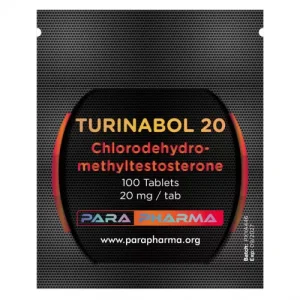 Click Here to Buy: Turinabol 20 by Para Pharma
Click Here to Buy: Turinabol 20 by Para Pharma
CJC-1295: A peptide that increases growth hormone and IGF-1 levels, aiding in fat loss, muscle gain, and improved sleep quality. It has a long half-life, making it convenient for users.
HGH Frag 176-191: A fragment of human growth hormone specifically designed for fat-burning. It targets adipose tissue without the broader effects of full-length HGH.
Tesamorelin: Known for reducing visceral fat, this peptide stimulates the release of growth hormone and is often used for weight management and metabolic health.
BPC-157: While primarily known for healing and recovery, BPC-157 can support fat loss indirectly by improving gut health and reducing inflammation.
Melanotan II: Originally developed for skin tanning, it also has appetite-suppressing properties, making it useful for weight management.
Thymosin Beta-4 (TB-500): Focused on healing and recovery, it can enhance physical performance and indirectly support fat loss through improved activity levels.
GHRP-6: A growth hormone-releasing peptide that boosts appetite and metabolism, aiding in muscle growth and fat loss.
Semaglutide: A GLP-1 receptor agonist that regulates appetite and blood sugar levels, making it effective for weight loss and metabolic health.
MK-677 (Ibutamoren): A growth hormone secretagogue that increases growth hormone and IGF-1 levels, promoting fat loss, muscle gain, and improved recovery.
List of Peptides With a Counteractive Effect Bodybuilders Must Avoid
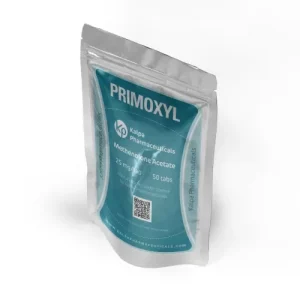 Click Here to Buy Primoxyl 25 by Kalpa Pharmaceuticals
Click Here to Buy Primoxyl 25 by Kalpa Pharmaceuticals
Some peptides can inadvertently lead to fat gain due to their effects on metabolism and appetite regulation. Here are a few that bodybuilders might want to avoid or use cautiously:
- GHRP-6 – While it stimulates growth hormone release, it also significantly increases appetite, which can lead to excess calorie consumption and fat gain.
- IGF-1 LR3 – This peptide enhances muscle growth but can also promote fat storage if not carefully managed with diet and training.
- MK-677 (Ibutamoren) – Though technically a growth hormone secretagogue rather than a peptide, it boosts GH levels but often leads to increased hunger and potential fat accumulation.
- CJC-1295 with DAC – While effective for muscle growth, its prolonged GH release can sometimes lead to unwanted fat retention if not paired with a strict diet
Overall
AOD-9604, derived from Growth Hormone, stimulates fat-burning by targeting lipolysis—the breakdown of fat for energy. It delivers these benefits without the additional effects of Growth Hormone, making it more cost-effective. For maximum effectiveness, it should be administered in a fasted state, ideally before bed and again in the morning at 125-250mcg doses. Pairing its use with fasting and fasted cardio can further enhance fat loss. Its sole focus is on improving the body’s ability to burn fat efficiently.
Read More: How Much Do You Know About B-AET? A Fat Burner You’ve Been Missing
Bodybuilding
Understanding Trenbolone-Induced Cough (“Tren Cough”)
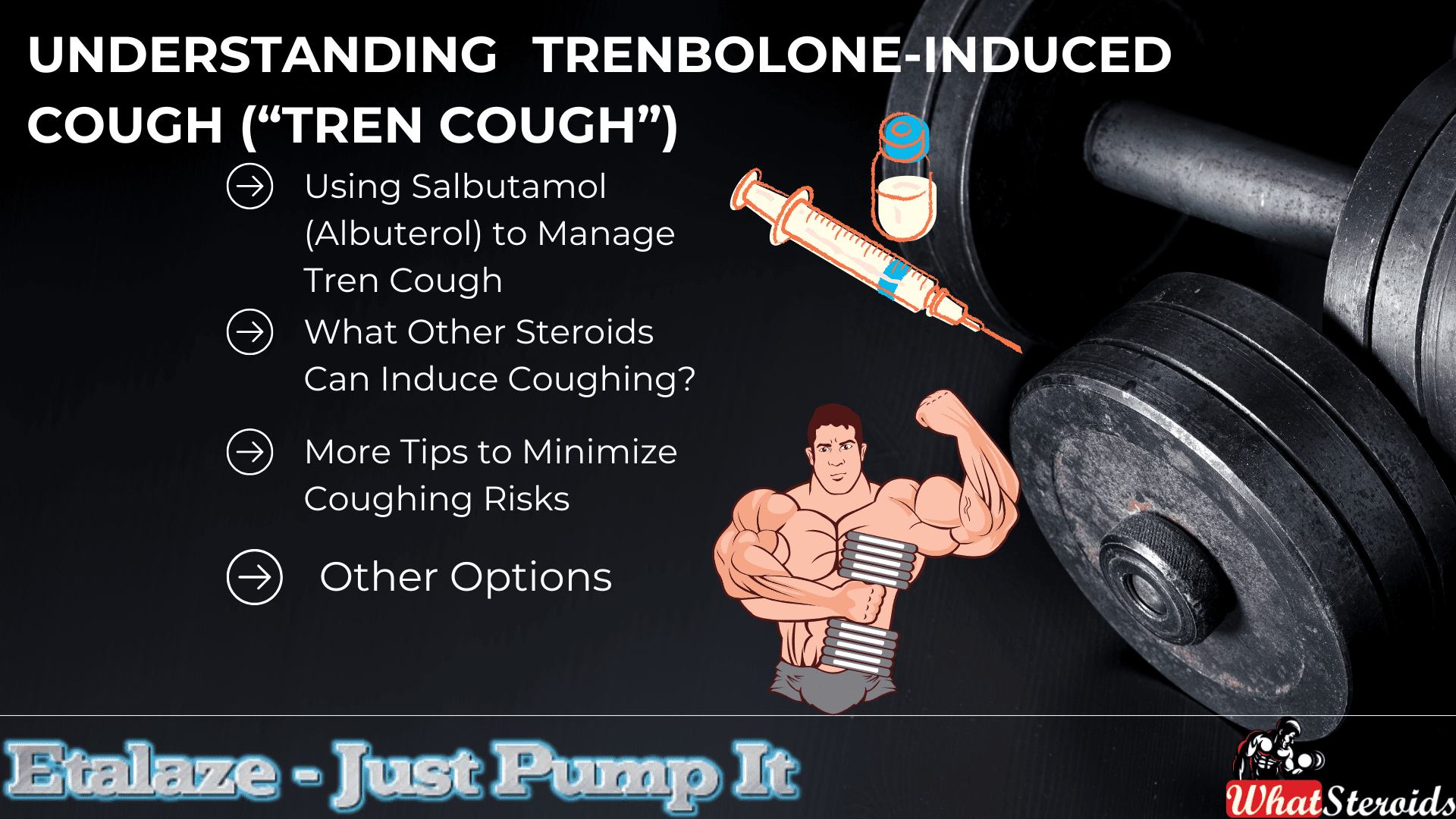
Trenbolone, a potent anabolic steroid, can sometimes cause “tren cough”—a sudden and intense coughing episode shortly after injection. Although not exclusive to Trenbolone, it is more commonly associated with this substance due to its highly irritant nature.
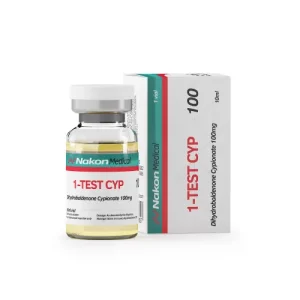 Click Here To Buy 1-Test Cyp 100 by Nakon Medical
Click Here To Buy 1-Test Cyp 100 by Nakon Medical
Mechanisms Behind Tren Cough
Solvent and Carrier Irritation
Trenbolone formulations often include volatile solvents like benzyl alcohol or benzyl benzoate, which may irritate lung tissues when absorbed quickly into systemic circulation.
Prostaglandin Release
Trenbolone promotes increased production of prostaglandins, particularly PGF2α. This compound triggers contraction in the smooth muscles of the lungs, leading to bronchoconstriction and coughing.
Micro-Oil Embolism
Tiny oil droplets from an injection can reach capillaries and travel to the lungs, causing mild embolic reactions that lead to temporary oxygen deprivation and coughing.
Histamine and Mast Cell Activation
For some individuals, Trenbolone triggers histamine release and mast cell activation, mimicking an allergic response and causing bronchospasms and cough reflexes.
Related Article: Best Syringes for Steroid Injection on Amazon
Using Salbutamol (Albuterol) to Manage Tren Cough
- Salbutamol, a widely-used β2-adrenergic receptor agonist, can alleviate tren cough symptoms by:
- Relaxing bronchial muscles, easing spasms that cause coughing.
- Inhibiting prostaglandin effects, reducing bronchoconstriction associated with PGF2α.
- Opening airways, preventing severe respiratory restrictions in susceptible individuals.
Application Methods
Inhaler (Optimal)
Take 1–2 puffs of salbutamol (100–200 mcg) 5–10 minutes before a Trenbolone injection. If coughing occurs afterward, additional puffs can swiftly resolve the issue.
Oral Tablets (Moderate)
Consuming 2–4 mg tablets 30–60 minutes before injection offers slower, longer-lasting relief but may be less effective than inhalation methods.
Nebulizer (Severe Cases)
For individuals with frequent episodes, nebulized doses of 2.5 mg salbutamol can provide substantial relief.
Preventive Measures to Reduce Tren Cough Risk
- Inject slowly to minimize systemic absorption and irritant effects.
- Split doses to lower reaction severity with smaller quantities.
- Opt for ventrogluteal injection sites, which have fewer blood vessels, reducing oil embolism risk.
- Choose lower-concentration solutions to lessen irritation, as higher concentrations (e.g., Tren Ace 200 mg/ml) are more likely to provoke reactions.
What Other Steroids Can Induce Coughing?
Here's a curated list of peptides, SARMs, and PEDs that may potentially cause coughing or respiratory irritation in bodybuilders and fitness enthusiasts:
Peptides
IGF-1 LR3 (Insulin-like Growth Factor): Known for its anabolic effects, IGF-1 LR3 can occasionally cause mild respiratory irritation due to systemic absorption.
TB-500 (Thymosin Beta-4): While rare, improper injection techniques or high doses may lead to transient coughing episodes.
GHRP-6 (Growth Hormone-Releasing Peptide): This peptide can stimulate histamine release, potentially leading to bronchospasms and coughing.
SARMs (Selective Androgen Receptor Modulators)
RAD-140: (Testolone) Some users report throat irritation or coughing, often attributed to solvents used in liquid formulations.
YK-11: Known for its myostatin-inhibiting properties, YK-11 may cause mild respiratory discomfort in sensitive individuals.
LGD-4033 (Ligandrol): Though uncommon, some users experience coughing due to carrier solvents or allergic-like reactions.
PEDs (Performance-Enhancing Drugs)
Boldenone Undecylenate (Equipoise): This injectable steroid can cause “Equipoise cough,” similar to tren cough, due to oil embolism or irritant solvents.
Testosterone Suspension: The water-based formulation may lead to coughing episodes if injected improperly or absorbed rapidly.
Nandrolone Decanoate (Deca-Durabolin): While less common, coughing can occur due to histamine release or systemic irritation.
More Tips to Minimize Coughing Risks
- Use proper injection techniques to avoid embolic reactions.
- Opt for lower-concentration solutions to reduce irritant effects.
- Consider antihistamines or bronchodilators for individuals prone to respiratory sensitivity.
Read More: Joint Stiffness: How to Manage It While on AAS
Are There Alternatives to Cough-inducing Steroids?
Here are some alternatives to cough-inducing steroids that can provide similar anabolic effects while minimizing respiratory irritation:
Peptides
IGF-1 LR3 (Insulin-like Growth Factor)
Promotes muscle growth and recovery without the irritant properties of certain steroids.
TB-500 (Thymosin Beta-4)
Enhances tissue repair and reduces inflammation, making it a safer option for recovery.
BPC-157 (Body Protection Compound)
Known for its healing properties, it supports muscle repair and joint health.
SARMs (Selective Androgen Receptor Modulators)
RAD-140 (Testolone)
Provides significant muscle-building effects with fewer systemic side effects compared to traditional steroids.
LGD-4033 (Ligandrol)
Boosts lean muscle mass and strength without the risk of respiratory irritation.
MK-677 (Ibutamoren)
Stimulates growth hormone release, aiding in muscle growth and recovery.
Natural Alternatives
Turkesterone
A plant-based ecdysteroid that supports muscle protein synthesis and recovery.
Ecdysterone
Another natural compound that mimics anabolic effects without the harsh side effects.
Creatine Monohydrate
Enhances strength and muscle mass through improved energy production during workouts.
Other Options
Human Growth Hormone (HGH)
Promotes muscle growth and fat loss, though it requires careful monitoring due to potential side effects.
Testosterone Boosters
Natural supplements like D-Aspartic Acid or Tribulus Terrestris can help optimize testosterone levels for muscle growth.
SARMs Alternatives
Legal and safer versions of SARMs are available, offering similar benefits without the risks associated with traditional SARMs.
Overall
We have explored the phenomenon of "tren cough," a sudden, intense coughing episode often caused by Trenbolone injections due to factors like solvent irritation, prostaglandin release, micro-oil embolism, or histamine activation. Preventive measures such as using salbutamol (via inhaler, oral tablets, or nebulizer), injecting slowly, splitting doses, and opting for lower-concentration solutions were highlighted.
Additionally, alternative compounds to tren cough-inducing steroids were discussed, including peptides like IGF-1 LR3 and TB-500, SARMs such as RAD-140 and LGD-4033, and natural options like Turkesterone, ecdysterone, and creatine. These alternatives provide anabolic effects while minimizing respiratory side effects. The conversation also underscored the importance of proper injection techniques and thoughtful compound selection to reduce risks.
-
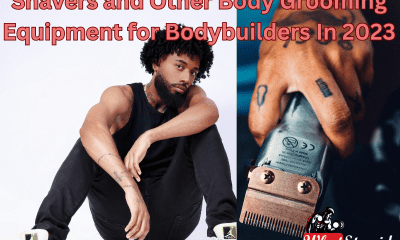
 Steroids2 years ago
Steroids2 years agoShavers and Other Body Grooming Equipment for Bodybuilders In 2023
-
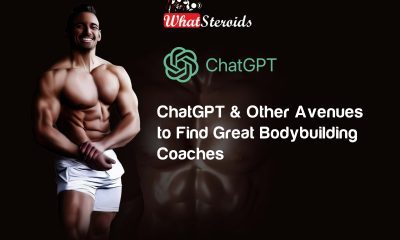
 Steroids2 years ago
Steroids2 years agoChatGPT and Other Avenues to Find Great Bodybuilding Coaches
-
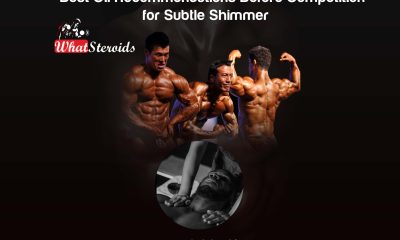
 Steroids2 years ago
Steroids2 years agoBest Oil Recommendations Before Competition for Subtle Shimmer
-
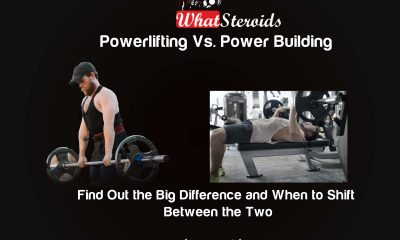
 Steroids2 years ago
Steroids2 years agoPowerlifting Vs Power Building: Find Out the Big Difference and When to Shift Between the Two
-
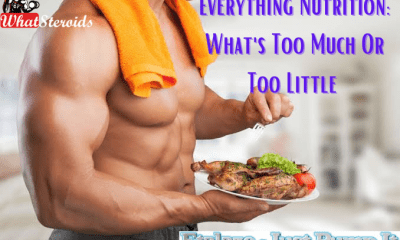
 Nutrition2 years ago
Nutrition2 years agoEverything Nutritional Food: What’s Too Much Or Too Little
-
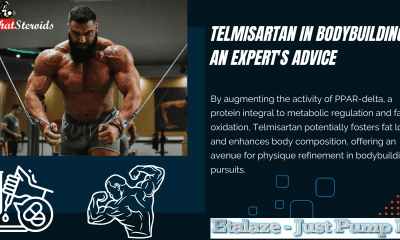
 Bodybuilding Products1 year ago
Bodybuilding Products1 year agoTelmisartan In Bodybuilding: An Expert’s Advice
-
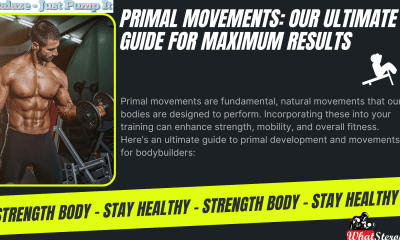
 Bodybuilding8 months ago
Bodybuilding8 months agoPrimal Movements: Our Ultimate Guide for Maximum Results
-
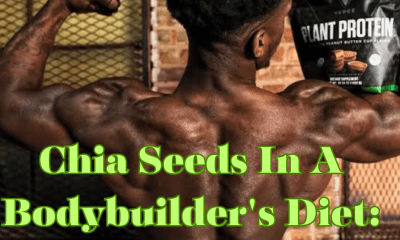
 Bodybuilding1 year ago
Bodybuilding1 year agoChia Seeds in A Bodybuilder’s Diet: An Expert’s Advice
-
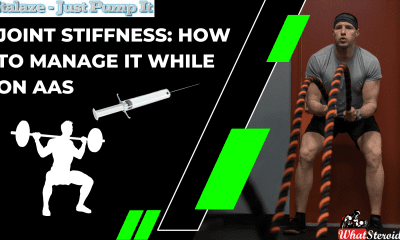
 Anabolic Steroids10 months ago
Anabolic Steroids10 months agoJoint Stiffness: How to Manage It While on AAS
-
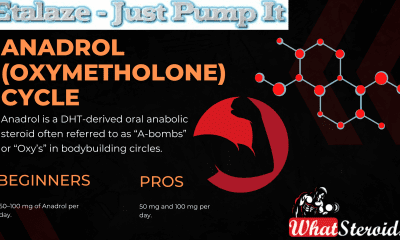
 Steroids1 year ago
Steroids1 year agoAnadrol Cycle: Benefits, Doses, Alternatives, etc.
-
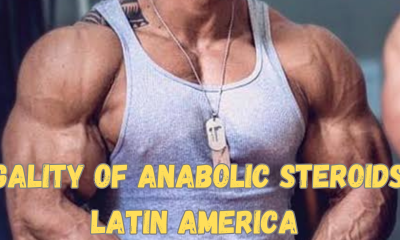
 Anabolic Steroids1 year ago
Anabolic Steroids1 year agoLegality of Anabolic Steroids In Latin America
-

 Beginners2 years ago
Beginners2 years agoTren Cycle for Beginners
-

 Bodybuilding9 months ago
Bodybuilding9 months agoHow Effective is Bone Broth for Recovery?
-

 Steroids10 months ago
Steroids10 months agoOmnitope (Oxytocin)
-

 Bodybuilding1 year ago
Bodybuilding1 year agoHow Much Is Too Much Cardio? Understanding Heart Rate Zones
-
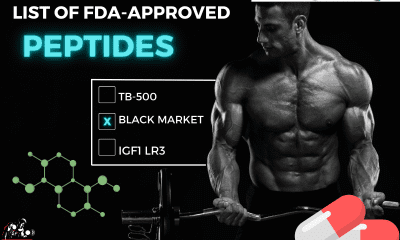
 Bodybuilding1 year ago
Bodybuilding1 year agoList of FDA-Approved Peptides
-

 Steroids9 months ago
Steroids9 months agoSleeping Positions for Effective Muscle Recovery
-

 Bodybuilding2 years ago
Bodybuilding2 years agoCompetition Prep Cycle for Pro Bodybuilders
-

 Bodybuilding1 year ago
Bodybuilding1 year agoCalorie Dumping: A Bodybuilder’s Guide
-

 Bodybuilding8 months ago
Bodybuilding8 months ago2nd Edition of Natural Bodybuilding Competition Facts
-

 Bodybuilding1 year ago
Bodybuilding1 year agoDemystifying Hypertrophy Training
-

 Bodybuilding9 months ago
Bodybuilding9 months agoAre Nootropics a Better Option to AAS?
-

 Anabolic Steroids12 months ago
Anabolic Steroids12 months agoHow Much Do You Know About B-AET? A Fat Burner You’ve Been Missing
-

 Steroids4 months ago
Steroids4 months agoOstarine For Beginners: The Ultimate Guide
-

 Product Reviews12 months ago
Product Reviews12 months agoTop Vitamins for Skin Health



















